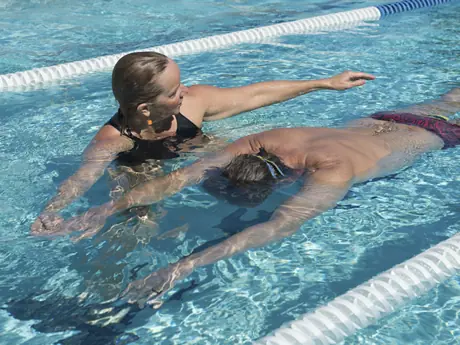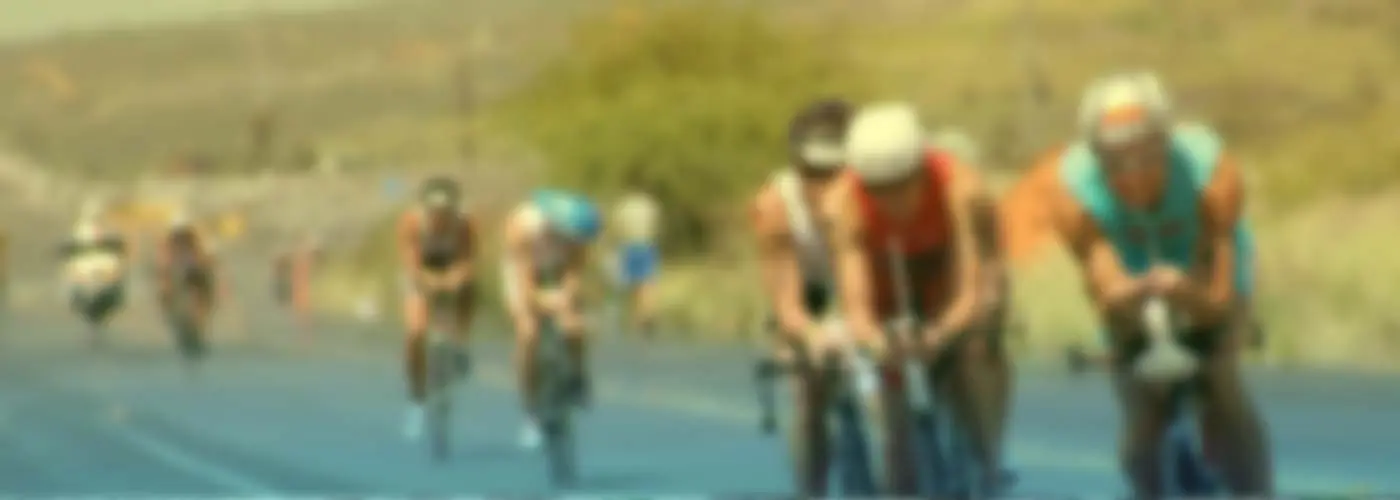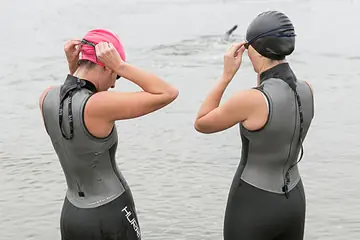
If swimming is the weak link in your race, you may be feeling frustrated with the sport. You put in the time, log the yardage, and power through sets using the strength and fitness you know you possess. You may have even tried a different approach, taking advice to slow down and relax as you swim. And yet, despite numerous efforts to improve, your progress has stagnated. You may as well just give up, right?
Swimming is a technique-based sport. Learning to swim efficiently and reduce the water's resistance should be your first priority. But just knowing that you need to improve your stroke technique is not enough. This is where swimming drills come into play. Incorporating drills into your workout does three things.
The Best Swim Technique for Open Water
1. It helps you isolate and focus on specific areas of your stroke technique.
2. It helps develop good muscle memory while simultaneously eliminating bad habits.
3. It builds strength without as much fatigue.
Although there are many swimming drills designed to address specific areas of the stroke, below are what I consider to be the five essential drills that triathletes should employ toward better body position, balance, and strength. Note that drills alone are not the key to success—and practicing drills incorrectly can be more harmful than helpful. Combine these drills with full stroke sets and, if possible, get a stroke analysis to ensure you're on the right path to stronger, faster swimming.
More: 7 Strength Moves to Speed Up Your Swim
Single Arm
The single arm drill allows you to zero in on key elements of proper stroke technique one arm at a time: the pull, the recovery, the timing of the breath, and the kick. Isolating each side of the body with the single arm drill will help keep your stroke symmetrical and balanced. If the drill is too challenging and you are not able to maintain a horizontal body position in the water, hold on to a kickboard with your non-stroking arm for more buoyancy. Focus on maintaining a consistent, narrow kick throughout the drill for increased lift and propulsion.
Side Kick
Developing a strong kick during training will allow you to use your legs strategically during your race, whether you want to break away from the pack, overtake someone, or escape a swimmer who is drafting off of you. Swimming is a total-body sport and ignoring your legs means that you are also denying yourself an extra weapon to on race day.
In the side kick, keep one arm hyperextended in front, with the other arm at your side, maintaining a constant kick and rotating your head to breathe. This is a foundational kicking drill that develops balance in the water, leg strength, and the ability to breathe on your side. Additionally, being on your side forces you to catch water as opposed to air, giving you a better leg workout than, for example, kicking with a kickboard.
Reasons to Go Long In the Pool
Tarzan Drill
Also known as the water polo drill, this is a challenging drill that is perfect for open-water swimming. In this drill, you practice the freestyle stroke, but with one twist: your head remains entirely above the water, looking forward in a fixed position. The Tarzan drill helps to strengthen the kick, as well as the neck and back muscles needed to lift the head to sight buoys, other swimmers, or obstacles. I recommend using this drill only for short distances in combination with regular freestyle sets.
Side-to-Side
The side-to-side drill allows you to work on such elements of the stroke as timing, body rotation, bilateral breathing, and proper balance in the water. This drill is similar to the full stroke, with the exception that you pause at the finish of each stroke and kick on your side for about two seconds. The pauses force you to rotate your body as you switch sides, and to practice a forceful kick in order to move through the water with greater ease after each pause. Side-to-side also requires you to practice bilateral breathing, which is important to keep the stroke balanced and symmetrical. Bilateral breathing is also useful in open water and can be used strategically during the race to see on both sides, to avoid looking at the sun, or to be able to sight landmarks on the shore.
More: 6 Tips for Beginning Open Water Swimmers
Hyperkick
This challenging drill helps to strengthen the kick, keep the body line horizontal, and develop the neck and posterior shoulder muscles. It's both a conditioning exercise and a reinforcement of certain elements of proper freestyle stroke mechanics. In this drill, keep your arms hyperextended in front of the face, hands locked, with the head above the surface of the water. Keeping the head above the surface will cause your hips to sink, so it is essential to keep up a fast, narrow kick during the drill to maintain a horizontal body position. Again, I recommend that this drill be used only for short distances to avoid placing undue strain on the neck and back muscles.
Although drills should not be the sole component of your workouts, they are essential to improve your efficiency in the water, prevent injuries, and add variety to your training so that you can be fully prepared to dominate the swim on race day.
More: 50 Things Open Water Swimmers Shouldn't Do
 Sign up for an IRONMAN.
Sign up for an IRONMAN.
About the Author











Discuss This Article